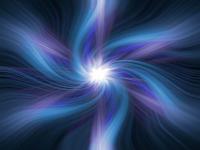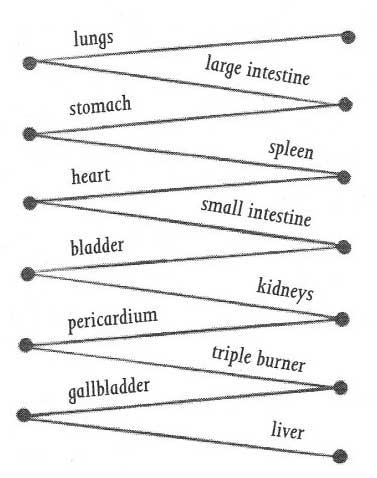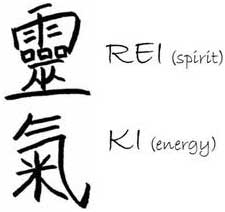Life Force


The ancient Chinese defined it as Life Force Energy. Its literal translation is “breath.” Theknowledge that an unseen energy flows through all living things and is connected directly to the quality of health has been part of the wisdom of many cultures since ancient times. The existence of this "life force energy" or LFE has been verified by recent scientific experiments, and medical doctors are considering the role it plays in the functioning of the immune system and the healing process. Everybody has the ability to raise their energy levels using their personal Life Force Energy through special breathing techniques and body awareness exercises.
Life Force Energy has been called by many names in different cultures…
Japan - Ki
China - Chi, Ch’i or Qi
Sanskrit – Prana
Korean – Gi
Vietnamese – Khi (pronounced xî)
Hawaiian – Mana
Tibetan Buddhism – Lüng
Western science continues theoretical research in the area of Quantum Physics to understand this energy field that unifies everything. It is used in healing arts such as Acupuncture, Shiatsu massage (Accupressure), Reiki and Chi Kung. These methods work with LFE energy meridians throughout the body by clearing stagnant energy through special breathing techniques or other exercises that cultivate LFE. These methods include “hands on” or “hands off” techniques. LFE is also used in martial arts for “breaking” or self defense purposes.

A look at China:
In traditional Chinese medicine, the body and mind are inseparable. Since Taoists believe that everything is part of the oneness of the universe, they make no distinction between the external forces of nature and the internal processes of the human body, believing that “the macrocosm exists within the microcosm.” In other words, any process or change that can be seen in nature can also be seen in the human body. LFE known in China as Qi, plays a central role in Chinese medicine although it is difficult to define. It is more readily understood in terms of its functions where it can be perceived. Situated somewhere between matter and energy, Qi has the qualities of both. It has substance without structure and it possesses energy qualities although it cannot be measured. Everything in nature can be expressed through yin and yang which represent the innate polarity of the energizing force of all aspects of nature. Yin and yang are opposites yet interdependent. Yin creates yang. Yang creates ying. They mutually control one another and this is the basic homeostasis in nature and the human body. All body organs have yin and yang aspects.

Yin organs:
The lungs Fei (Note: The lungs control breathing and therefore control Qi of the entire body.)
The spleen Pi
The heart Xin
The liver Gan
The kidneys Shen
Yang organs:
The stomach Wei
The small intestine Xiao Chang
The large intestine D Chang
The bladder Pang Guang
The gallbladder Dan
Triple Burner San Jiao (A grouping of organs by function and locality paired with the pericardium in a yin/yang relationship.
- Upper burner, “ the fog”– Heart and lungs
- Middle burner, “foam” – Spleen and stomach
- Lower burner, “the swamp” – Intestines, kidneys, bladder
A fair example of Qi is a thunderstorm. The force of a thunderstorm can be understood in terms of Qi. The power of Qi can be observed in the fallen trees and structures courtesy of the storm’s aftermath. In the human body, the strength of the digestive organs can be determined by evaluating the color of the tongue, the strength of the pulse and the body’s response to nutrition via the appetite.
Functions of Qi:
Transformation. Qi transforms one type of substance into another
Movement. All movement is accompanied by its own qi, including growth and development and even walking, breathing and thinking.
Protection. Qi protects the body from attacks by disease causing organisms
Retention. Qi keeps organs in their proper place … i.e. blood within the vessels and body fluids inside the body.
Warming. The yang aspect of Qi keeps the entire body warm; when it is deficient, a person can experience chronic cold in the extremities and decreased function in all activities that require warmth.
Over the centuries, a sophisticated system of diagnosis has evolved in traditional Chinese medicine. By following various established procedures, a practitioner can construct a detailed picture of the status of all the internal organs without aid of laboratory tests or other types of technology. By identifying "patterns of disharmony", a physician can assess the status of organs, gradually uncovering the cause of disease by grouping the symptoms into traditional patterns. These groups are known as the eight parameters and consist of four groups of polarities, yin/yang, heat/cold, internal/external, excess/deficiency.
Reiki and Raku-kei:
While I am not a personal advocate of all the forms of Rei’Ki that have developed over the years in the West or the “signing of symbols into the aura, I do have respect for the original conception.
Raku-kei is the ancient Tibetan art and science of spiritual self improvement which was practiced by Tibetan Lamas. Reiki comes from Raku-kei where Raku means the vertical flow of energy and Kei (or Qi, Chi in Chinese) is the horizontal energy. The calligraphy of these two words was painted upon large wall hangings and served as a focus as enlightenment for Tibetan holymen. These Reiki calligraphs were used only for self development and purification in the beginning. One wall of the temple was made of copper polished to a high sheen. The aspirant would sit on a four-legged wooden stool with silver inlays going up the sides if each leg and connecting with a silver inlay cubicle on the seat. The stool was placed in an earthenware container. The container was oval in shape representing the Akasa (etheric egg) and it had three inches of water in it. Behind the aspirant was an angled wall with which contained the Lama’s prayer and the calligraphs of the Reiki symbols. The symbols were reflected by the copper wall and the initiate would meditate upon them as he sat on the stool. The idea was to implant them deep in the brain through concentration thus raising consciousness and awareness while purifying the mind and body. This very ancient science had an oral history and eventually disappeared but the symbols would later be rediscovered in ancient Sanskrit texts.

The word Reiki is made of two Japanese words - Rei which means "God's Wisdom or the Higher Power" and Ki which is "life force energy". Rei’Ki energy comes from a transcendental part of the self that is connected to a higher power that is a infinite supply of healing force.
Reiki is an ancient art form that taps into and directs the universal life force and allows a practitioner to channel it in a way that brings the mind, body and spirit back in to harmony and a healthy, balanced way of being. In reality, Reiki therapists never “heal” anyone, they simply allow the person’s body to heal itself which it already knows how to do. This same theory also applies to other healing modalities such as the popular crystal healing where universal or cosmic energies are channeled and directed to the body opening the chakras and assisting the body in its own healing process.
Reiki was rediscovered by a nineteenth century Japanese monk named Mikao Usui in the mid 1800s. Although there are no records to support it, the accepted background of Mikao Usui is that he was a Christian monk and the Principal of a Christian seminary in Kyoto, Japan. He was reportedly asked by his students at the seminary why they could not heal the way Jesus had said they could. When he had no answer to give them, he resigned from the seminary and left to study Christianity in more depth. He also searched Chinese scripts to no avail and eventually went to India to study holy writings. When he eventually returned to Japan, he discovered some Sanskrit formulas and symbols in ancient Buddhist sutras which seemed to have the answer to his quest. Although he had actually rediscovered the symbols he did not know what to do with them or how to use them. He was living in a monastery in Kyoto at the time and he decided to go to the holy mountain of Kuriyana to fast and meditate in order to gain clarity regarding his question of what to do with the symbols. He fasted and meditated for 21 days with the help of 21 stones which he placed in front of him and discarded one at a time at a rate of one per day to help him count the amount of time he spent there. He was hoping to gain contact with the level of consciousness which was described in the Sanskrit formula he had found.
He read the Sutras, sang songs and meditated but nothing happened to him until the morning of the last day. Before dawn, he saw a distant light that appeared to be rushing toward him. It looked as though it would strike him in the forehead and he allowed it to happen. When it did, he saw millions of tiny colored bubbles of light in all of the colors of the rainbow. Then a great white light appeared. Larger transparent bubbles appeared to him, each of which contained one of the symbols he had discovered in the Sanskrit teachings. They paused long enough for him to receive instruction on how to use them. This was committed to memory.
This was how the Usui system of Reiki was “rediscovered” and created.
Usui returned to the monastery and decided the best use of his skills should go to the slums of Kyoto to heal the beggars so they could go out and earn a living instead of having to be. He did this for seven years until he started to notice the same faces were showing up in the slums again. This troubled Usui and he felt himself a failure so in the days that followed he contemplated healing and realized that he had forgotten one of its greatest principles which was gratitude. The result was the Principles of Reiki:
Just for today do not worry
Just for today do not anger
Honor your parents, teachers and elders
Earn your living honestly
Show gratitude towards all living things
Soon thereafter Usui left the slums and began traveling around Japan teaching Reiki. He would stand on a street corner holding a lighted torch in the middle of the day. To those he attracted, he extended an invitation to come to a meeting to learn about “light.” He spread his teachings to all who wanted to learn how to do it.
Usui is buried in the Kyoto temple and the story of his life is written on his gravestone. His grave was honored by the Emperor of Japan.

The secret art of inviting happiness
The miraculous medicine of all diseases
Just for today, do not be angry
Do not worry and be filled with gratitude
Devote yourself to your work and be kind to people
Every morning and evening, join your hands in prayer,
Pray these words to your heart,
And chant these words with your mouth.
Usui Reiki Treatment for the improvement of body and mind
The Founder … Usui Mikao